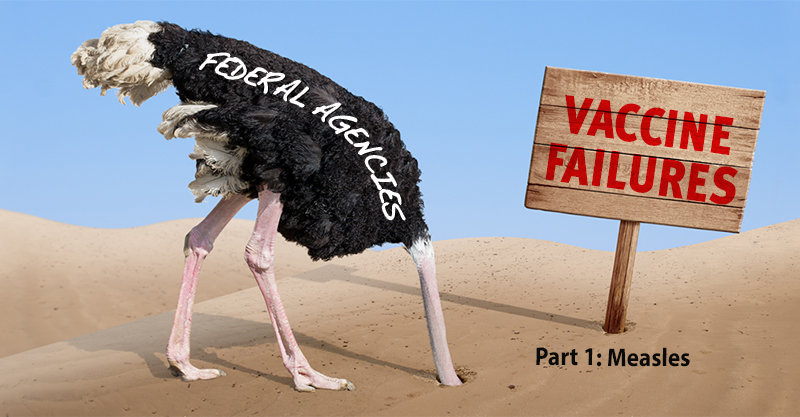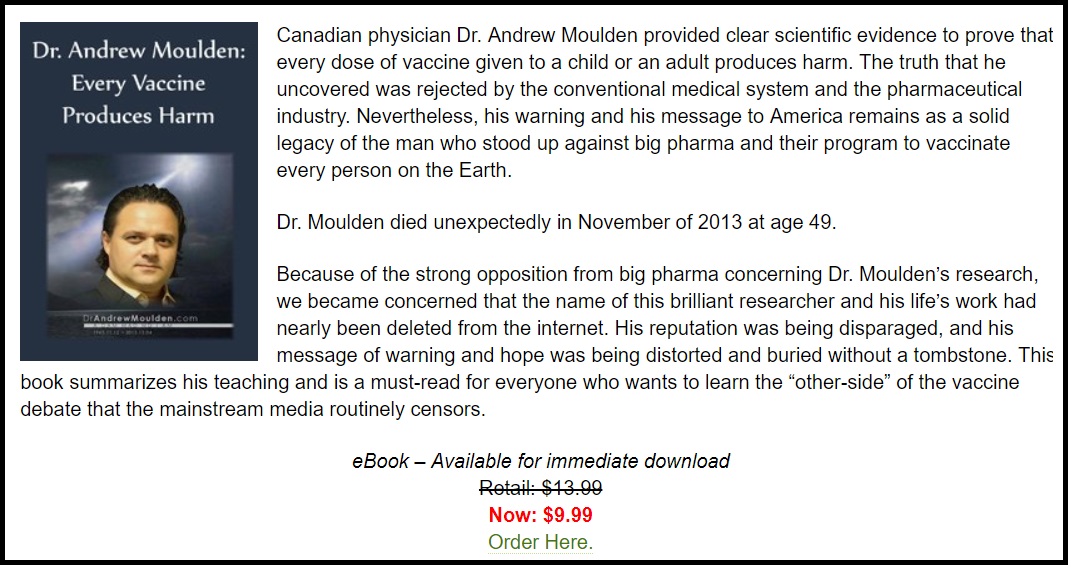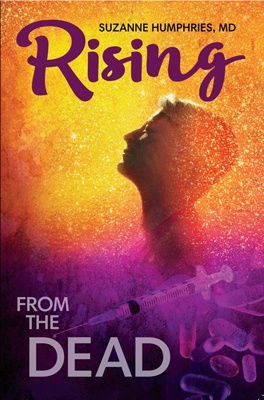Vaccine Failure: The Glaring Problem Officials Are Ignoring. Part I: Measles Vaccination
By the Children’s Health Defense Team
[Note: This is the first in a series of articles that will examine the serious problem of vaccine failure—a problem that, scandalously, remains unacknowledged by the public health officials and politicians promoting draconian vaccine mandates.]
The coordinated and stepped-up effort to eliminate vaccine exemptions and impose new vaccine mandates was, without a doubt, one of 2019’s top stories, both nationally and internationally.
One of the primary weapons in the anti-vaccine-choice arsenal was measles hysteria—whipped up by a biased media willing to use false talking points to demonize the unvaccinated while ignoring or glossing over measles vaccination’s flawed track record. As we brace for more measles hype in 2020, Children’s Health Defense believes it is important to keep calling attention to the real facts about the failures of mass measles vaccination.
Failure #1: Primary and secondary measles vaccine failures are common.
It is far from uncommon for vaccines—including the measles-mumps-rubella (MMR) and MMR-plus-varicella (MMRV) vaccines used in the United States—to fail to live up to their textbook promises. As of 2019, in fact, leading vaccine scientists admitted that
“the ability of the current measles vaccine to sustain long-term protective immunity and adequate herd immunity in settings with no wild type virus exposure” is “still a subject of debate.”
Right at the starting gate, anywhere from 2% to 12% of children who receive their first measles-containing vaccine exhibit “primary vaccine failure”—defined as vaccine non-responsiveness. For largely unknown reasons, this subset of children (and also adults) fails to mount the expected antibody response after either an initial vaccine or a booster shot.
Even in those for whom the vaccine appears to “take,” vaccinated individuals “have lower levels of measles-specific antibody than do those with immunity derived from exposure to wild-type” measles virus.
Secondary vaccine failure (waning immunity) is also a built-in feature of measles (and other) vaccines, with vaccine efficacy acknowledged to be “lower and not life-long compared to the wild type virus infection.”
Studies show that levels of measles antibody progressively decreasewith increased time since vaccination. Moreover, additional boosters do not solve the problem. In a CDC study of 18-28 year-olds who were given a third dose of MMR vaccine, protection petered out in less than a year—a fact that forced the study’s authors to argue against a routine third dose.
Vaccine failure apparently received some attention in the 1970s and 1980s, but since the 1990s, the topic has dropped off of most researchers’ radar and remains woefully underinvestigated.
Some vaccine scientists—astonished at the “surprisingly high numbers of vaccine failure among one- and two-dose recipients of measles-containing vaccine”—are calling for longer-term monitoring of vaccine-induced immunity after both the first and second doses, as well as more granular data about vaccine efficacy, immunogenicity and measles epidemiology.
Failure #2: Measles-vaccinated mothers are not passing on adequate immunity to their infants—thus, the most vulnerable age group is getting measles.
Studies have confirmed that the maternal antibodies produced by measles vaccination (as opposed to the lifelong immunity furnished by natural measles infection) are incapable of providing infants with adequate maternal protection in the first year of life.
As a result, a significant proportion of those getting measles are infants. As long ago as 1999, vaccine scientists already knew that vaccination was increasing U.S.-born infants’ vulnerability to measles.
A study published that year in Pediatrics, titled “Increased Susceptibility to Measles in Infants in the United States,” reported that infants born to vaccinated mothers had a “measles attack rate” nearly triple that of babies born to unvaccinated mothers—33% versus 12%.
In the first four months of 2019—when about 70% of U.S. measles cases for the year had already been reported—one-fourth of cases were in children younger than 15 months.
An analysis of U.S. measles cases from 2001 through 2008 likewise found that 24% were in under-15-month-olds, and a CDC study of measles cases from 2001 through 2015 found that incidence per million population “was highest in infants aged 6 to 11 months . . . and toddlers aged 12 to 15 months.”
As Children’s Health Defense has frequently noted, infants are at far greater risk of measles-related complications and death compared to elementary-school children over age five (the age group that primarily and uneventfully experienced measles in the pre-vaccine era).
Failure #3: Vaccinated individuals are getting measles—probably more often than official counts show.
Primary vaccine failure and waning vaccine-induced immunity open the door for measles in vaccinated individuals, and notably in vaccinated adults—another group at higher risk of measles complications.
- Available CDC data for part of 2019 indicate that at least 13% of U.S. measles cases with known vaccination status (76/579) had previously received one or more measles vaccine doses; vaccination status was unknown for an additional 18% of cases (125/704). Adults age 20 or older represented 23% of total cases (165/704). The CDC did not report vaccination status by age group.
- When the CDC analyzed fifteen years of measles cases (2001-2015), it reported the same percentages; the vaccinated represented roughly 13% of measles cases—and 65% of the vaccinated cases were in adults at least 18 years of age. In the 18% of cases for whom vaccination status was unknown, 87% were adults.
- A study of California measles cases, also from 2000 through 2015, reported that 20% of individuals with confirmed measles and verified vaccination status had received one or more doses of measles vaccine.
- Studies from around the world tell the same story, reporting measles, for example, in fully vaccinated Russian adults, Australian air travelers and residents of the Republic of the Marshall Islands.
Official measles data almost certainly are underestimating the extent of measles in the vaccinated. This is because measles vaccination sometimes “modulates” the clinical presentation of measles, producing a different symptom picture.
The California study of 2000-2015 measles cases found that individuals who had received two or more doses of measles-containing vaccine were often “less ill” than their one-dose or unvaccinated counterparts; importantly, however, they were still capable of transmitting measles and “required the same amount of public health effort in tracing contacts.”
In 2009, two U.S. physicians who had been fully vaccinated with two-plus MMR doses got measles but “continued to see patients, because neither considered that they could have measles.”
A 1990 study of seroconfirmed “vaccine-modified” measles found that about 16% of vaccinated patients either did not meet the CDC clinical case definition of measles or had no detectable measles-specific immunoglobulin M (IgM). An absent or weak IgM response makes it more challenging to diagnose and confirm measles in the laboratory.
Researchers have concluded that these factors may be leading to “underreporting of measles cases and . . . overestimation of vaccine efficacy in highly vaccinated populations.”
Failure #4: Vaccinated individuals are getting measles from the vaccine and transmitting the vaccine strain to others.
Recent CDC research indicates that cases of measles in individuals who experience primary vaccine failure “might be as transmissible as cases of measles in unvaccinated individuals.”
In addition, modern genotyping techniques are showing that it is the vaccine strain of measlesthat is causing measles in a sizeable proportion of cases—in both vaccinated individuals and persons with whom vaccinees come in contact.
The CDC has known about the potential for viral shedding from measles vaccines since at least the 1990s, when vaccine-strain measles injured and killed a 21-year-old college student.
In 2015, sequencing of 194 U.S. measles cases showed that nearly two in five (38%) were the result of the vaccine strain rather than wild-type measles virus.
In a 2016 study published in the Journal of Clinical Microbiology, CDC and other researchers spelled out the importance, during outbreak investigations, of differentiating between wild-type measles and vaccine-strain measles (which they called “measles vaccine reactions”).
In 2019, however, the CDC sequenced only a third of measles cases. This lack of comprehensive information about measles strains for all cases not only contributes to underestimation of measles disease among the vaccinated but can lead to “unnecessary public health interventions.”
The New York officials who last year barred unvaccinated children from public spaces and imposed measles vaccine mandates across entire zip codes were silent on the topic of vaccine-strain measles.
Although vaccine scientists are loathe to admit that vaccinated individuals can function as vectors of measles transmission to others, scattered studies show that this is the case.
Moreover, recent CDC research reported in JAMA Pediatrics indicates that primary cases of measles in vaccinated individuals are as likely to infect other vaccinated individuals as they are to spread measles to unvaccinated individuals.
In 2011, New York City public health officials reported five cases of measles, all of whom “had prior evidence of measles immunity,” either from two doses of measles-containing vaccine or from a past titer positive for measles antibodies.
What the researchers found particularly noteworthy was the fact that the index patient “was demonstrated to be capable of transmitting disease to other individuals” despite having received two MMR doses and despite similar immunity in the other four cases.
In late 2019, Japanese researchers reported measles transmission from a twice-vaccinated individual to three unvaccinated persons; the chain of transmission then continued to six other persons, all fully vaccinated. (Japan banned the MMR vaccine in 1993 and instead uses a measles-rubella vaccine.)
Without specifying how to achieve such an aim, the researchers concluded that “To prevent measles transmission and outbreak particularly in countries where measles was almost eliminated, patients with [secondary vaccine failure] for measles should be cautiously monitored.”
CDC researchers, also writing in late 2019, agree that “continued monitoring of measles among vaccinated persons is warranted.”
Failure #5: Vaccination failures aren’t limited to measles-containing vaccines—failure is inherent to all vaccines.
Scientists have known about vaccine failure for years. In 2006, Canadian researchers admitted that
“the immunity afforded by [imperfect] vaccines is not complete and may wane with time, leading to resurgence and epidemic outbreaks notwithstanding high levels of primary vaccination.”
Summarizing the conundrum facing vaccination programs, the Canadian researchers noted that, on the one hand, “if the vaccine provides only temporary immunity, then the infection typically cannot be eradicated by a single vaccination episode,” but on the other hand, “having a booster program does not necessarily guarantee the control of a disease” either.
Public health agencies and officials continue to sidestep this immensely consequential information, instead choosing to bludgeon citizens with factually incorrect measles and vaccine propaganda to justify more revocation of exemptions.
However, a vaccination program that increases serious risks in the most vulnerable, produces ongoing outbreaks and transmits vaccine strains of illness to the vaccinated and unvaccinated alike can hardly be deemed a success.
Read the full article at ChildrensHealthDefense.org
© 2019 Children’s Health Defense, Inc.
This work is reproduced and distributed with the permission of Children’s Health Defense, Inc.
Want to learn more from Children’s Health Defense? Sign up for free news and updates from Robert F. Kennedy, Jr. and the Children’s Health Defense. Your donation will help to support them in their efforts.
Leaving a lucrative career as a nephrologist (kidney doctor), Dr. Suzanne Humphries is now free to actually help cure people.
In this autobiography she explains why good doctors are constrained within the current corrupt medical system from practicing real, ethical medicine.
One of the sane voices when it comes to examining the science behind modern-day vaccines, no pro-vaccine extremist doctors have ever dared to debate her in public.
-
Book – The Vaccine Court, by Wayne Rohde – 240 pages
“The Dark Truth of America’s Vaccine Injury Compensation Program”
FREE Shipping Available!
ORDER HERE!









Leave a Reply